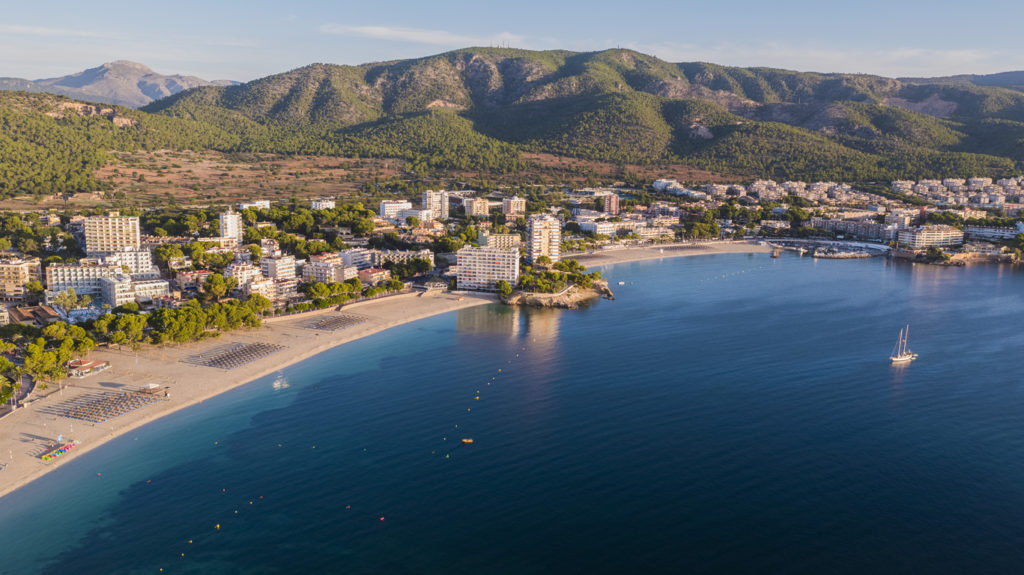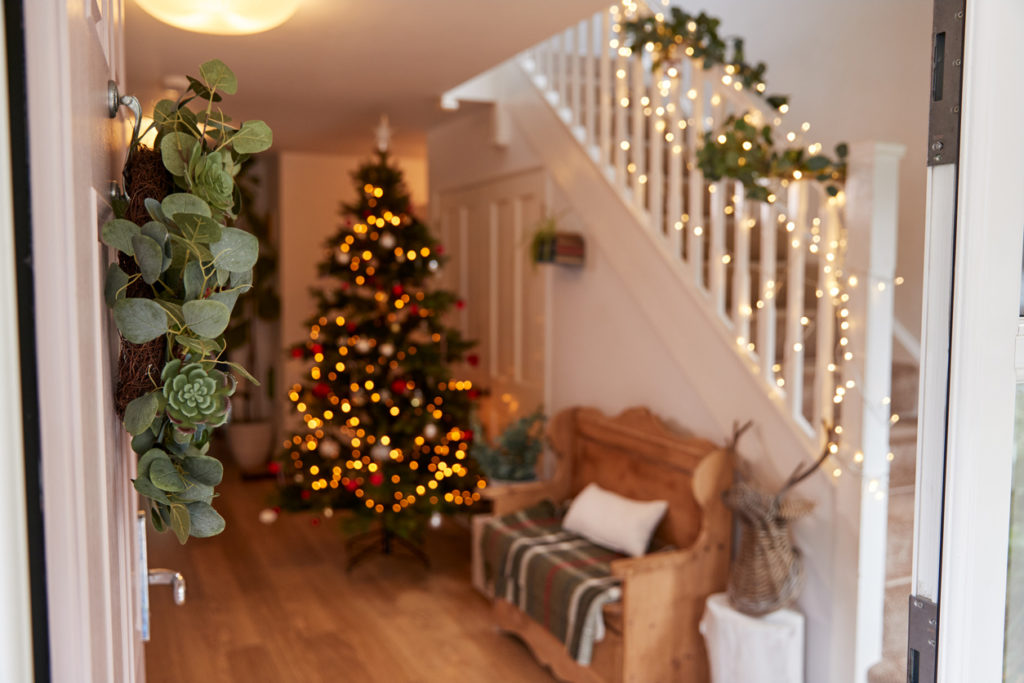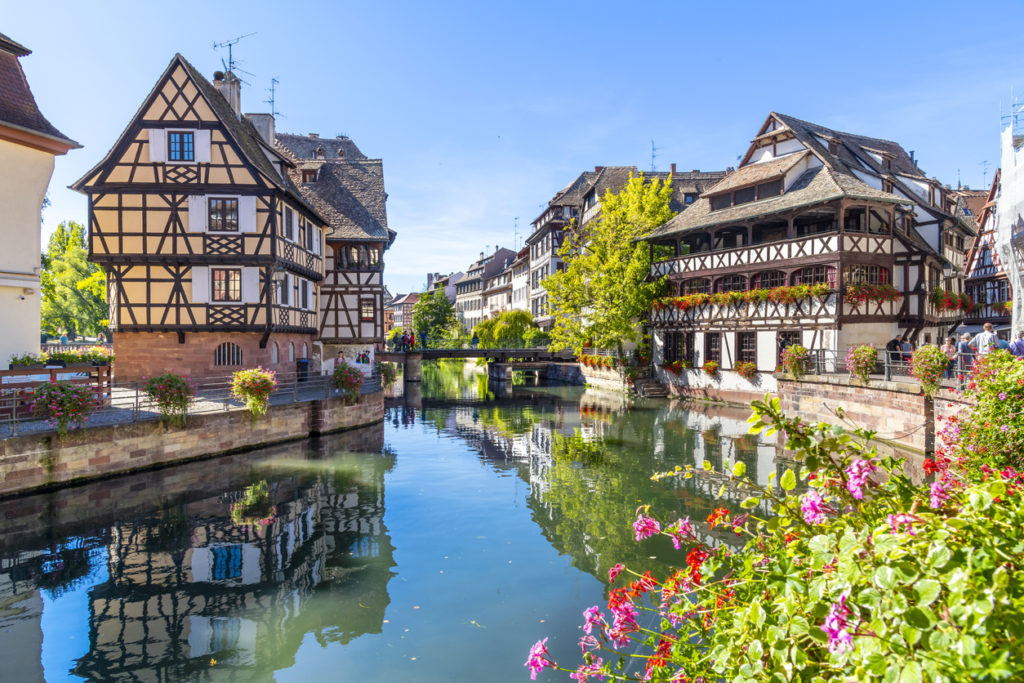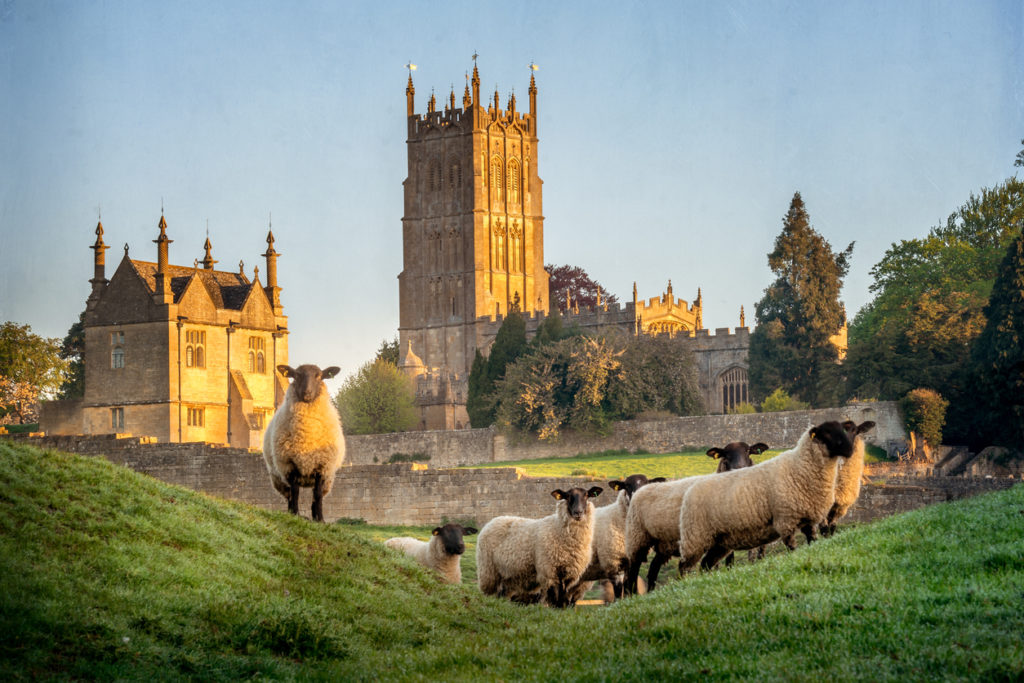Nestled in the heart of Catalonia, the medieval town of Besalu offers visitors a captivating journey through time. With its well-preserved architecture and rich history, Besalú stands as a testament to the region’s cultural and historical significance.
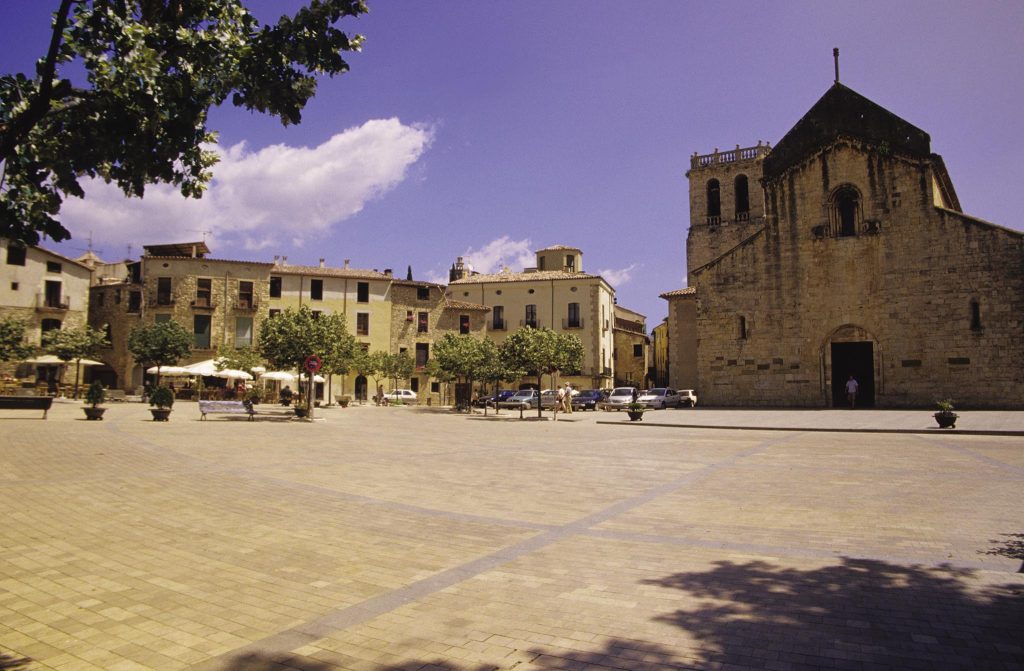
The origins of Besalu trace back to its establishment as a county in 894, serving as the capital of the County of Besalu during the early Middle Ages. The town’s strategic location between the Fluvià and Capellades rivers contributed to its prominence in the region. The name ‘Besalú’ is derived from the Latin ‘Bisuldunum’, meaning a fort on a mountain between two rivers, reflecting its historical significance as a fortified settlement.
One of the most iconic landmarks of Besalú is its 12th-century Romanesque bridge spanning the Fluvia river. This majestic structure, with its seven arches and fortified gateway at the midpoint, has become emblematic of the town’s medieval heritage. The bridge not only served as a vital crossing point but also as a defensive mechanism, showcasing the architectural ingenuity of the time.
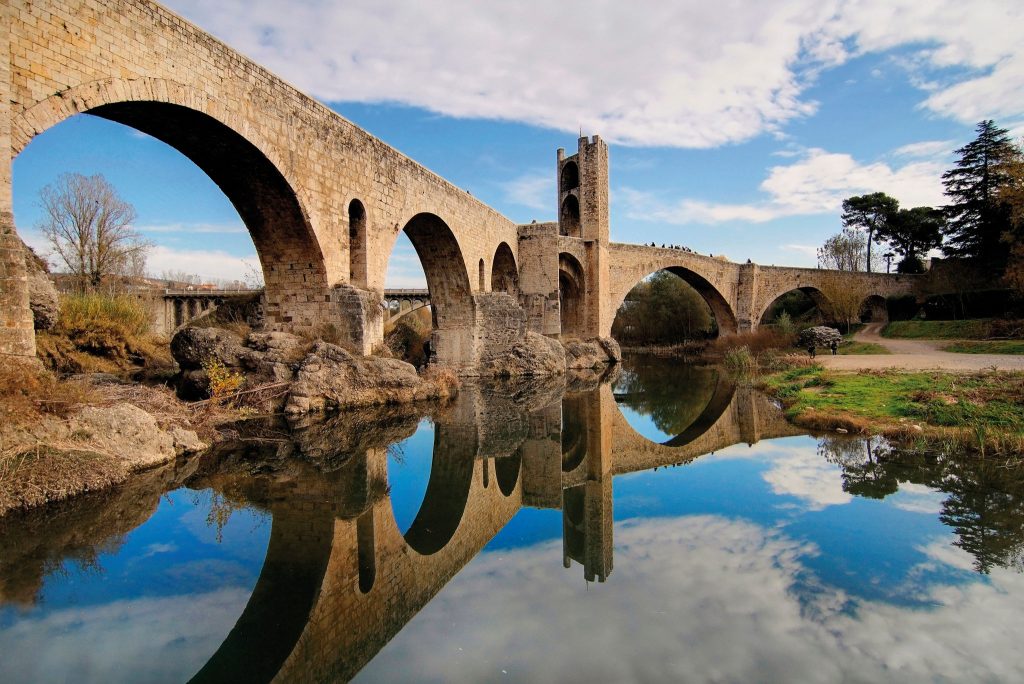
Adjacent to the bridge lies the Jewish quarter, a testament to the once-thriving Jewish community in Besalu. The presence of a restored mikveh, a ritual Jewish bath dating from the 11th or 12th century, highlights the town’s cultural diversity and religious tolerance during the medieval period. The narrow cobblestone streets and ancient stone buildings further enhance the ambience, transporting visitors to a bygone era.
Besalú’s religious architecture is equally compelling. The Church of Sant Pere, consecrated in 1003, stands as a remarkable example of Romanesque design. Its austere façade and intricate details reflect the spiritual devotion of the era. Nearby, the Church of Sant Vicenç, dating from the 11th and 12th centuries, showcases sculptural doorways and windows that exemplify the artistic craftsmanship of medieval Catalonia.
The town’s layout, characterized by arcaded streets and squares, offers a glimpse into the daily life of its medieval inhabitants. The Placa Major, the main square, with its 16th-century arcades, served as the centre of social and economic activities. Wandering through these streets, visitors can appreciate the harmonious blend of residential and commercial spaces that have stood the test of time.
Recognising its historical and architectural value, Besalú was designated as a historical national property (“conjunt historic-artistic”) in 1966. This designation has played a crucial role in preserving the town’s medieval character, ensuring that future generations can experience its unique charm.
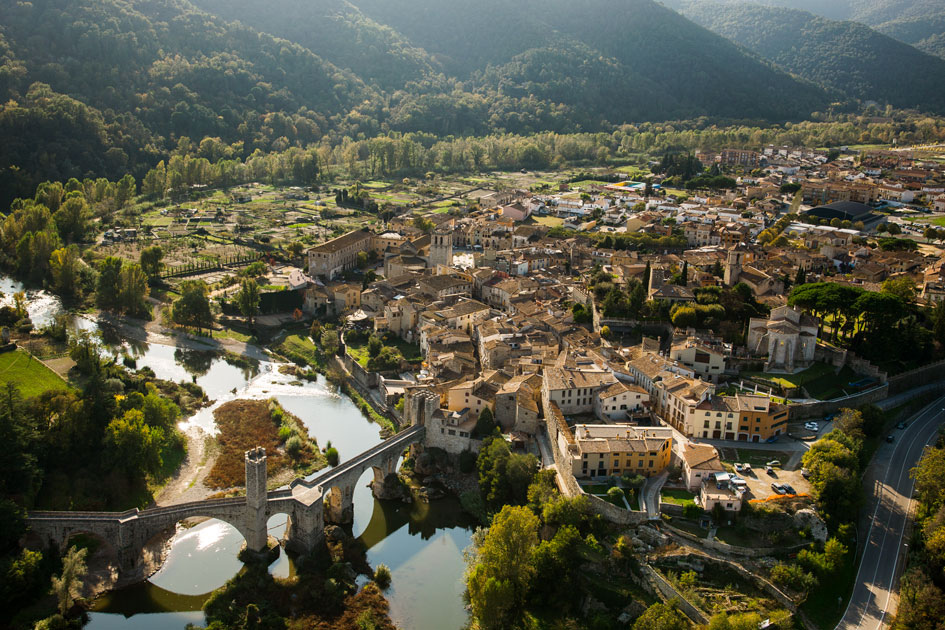
Located approximately 130 kilometres from Barcelona, Besalu is accessible by car, making it a convenient day trip for those exploring Catalonia. The journey offers scenic views of the Catalan countryside, setting the stage for the historical immersion that awaits.
Upon arrival, crossing the medieval bridge provides a fitting introduction to the town’s rich heritage. As you meander through the labyrinthine streets, each corner reveals a new facet of Besalú’s storied past. From the remnants of the medieval synagogue to the imposing structures of the former county castle, the town is a living museum of medieval architecture and culture.
No visit to Besalu would be complete without indulging in the local cuisine. The town boasts a variety of eateries offering traditional Catalan dishes, allowing visitors to savour the flavours that have been part of the region’s culinary heritage for centuries. Whether sampling cured meats, artisanal cheeses, or freshly baked goods, the gastronomic experience complements the historical exploration.
Throughout the year, Besalu hosts various festivals that celebrate its medieval legacy. These events often feature reenactments, traditional music, and artisanal markets, providing an immersive experience of the town’s historical ambience. Participating in these festivities offers a deeper appreciation of the customs and traditions that have shaped Besalú’s identity.
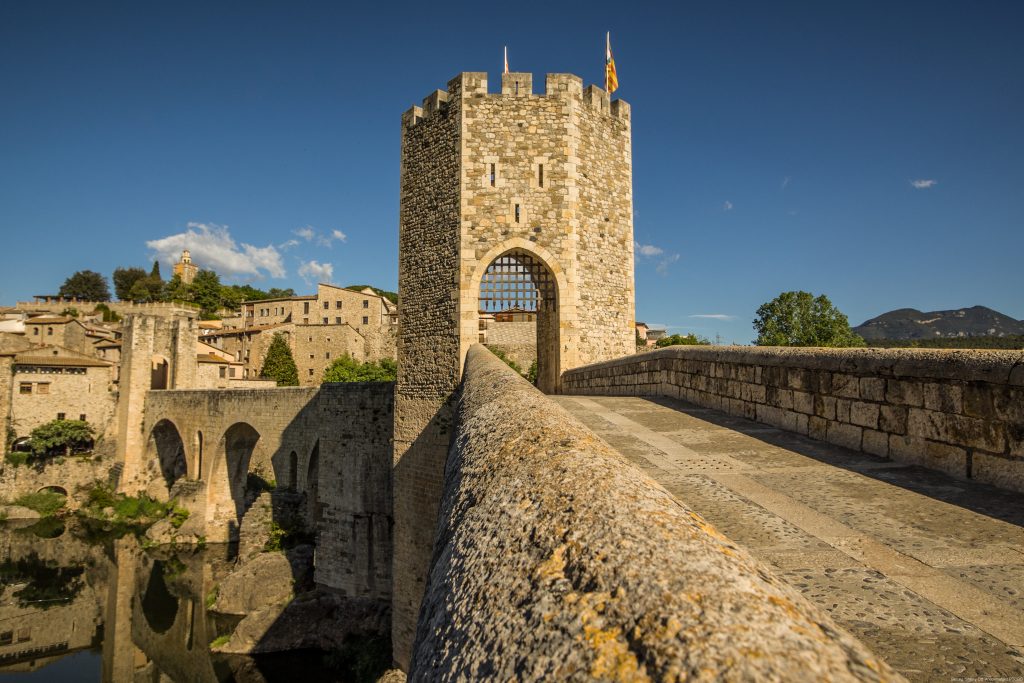
Final thoughts…
Besalu stands as a testament to Catalonia’s rich medieval heritage, offering visitors an authentic glimpse into the past. Its well-preserved architecture, cultural landmarks, and vibrant traditions make it a must-visit destination for those seeking to connect with history. As you stroll through its ancient streets and cross its iconic bridge, you’ll find yourself transported to a time when Besalu was a bustling centre of commerce, culture, and faith.
You can find other articles on Catalonia by clicking here.
Images for this article are provided and copyrighted by the Catalan Tourist Board.




